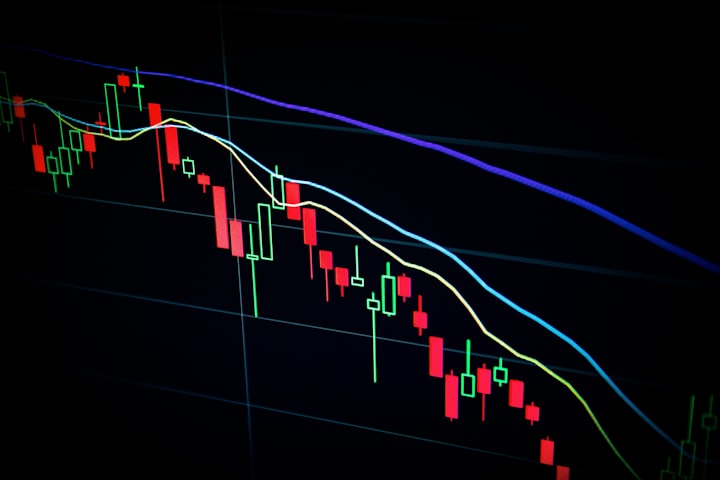The Art of Trading and Investing
Navigating the World of Financial Markets

In the ever-evolving landscape of finance, trading and investing play pivotal roles in shaping the global economy. While the terms "trading" and "investing" are often used interchangeably, they encompass distinct strategies and approaches. Understanding the fundamentals and nuances of these practices is crucial for individuals seeking to navigate the intricate world of financial markets. This article aims to shed light on the art of trading and investing, exploring their key differences, strategies, and the potential rewards and risks involved.

Trading: Capitalizing on Short-Term Market Fluctuations
At its core, trading involves buying and selling financial instruments such as stocks, commodities, currencies, or derivatives with the intention of profiting from short-term price movements. Traders employ various techniques, such as technical analysis, chart patterns, and market indicators, to identify trends and exploit market inefficiencies. The focus is on capitalizing on short-term price volatility rather than long-term value appreciation.
Traders typically execute a high volume of transactions within a shorter timeframe, ranging from minutes to days. Day traders, for instance, aim to close all their positions before the end of the trading day. Scalping, swing trading, and momentum trading are other popular trading strategies, each catering to different risk appetites and time horizons.

While trading can be highly profitable, it requires discipline, active monitoring of market conditions, and the ability to react swiftly to changing trends. It demands a deep understanding of technical analysis, risk management, and the psychology of trading. Due to its fast-paced nature, trading is often associated with higher risk levels and requires a proactive approach to minimize potential losses.
Investing: Long-Term Wealth Creation and Portfolio Growth
Investing, on the other hand, involves allocating capital with the objective of generating returns over an extended period. Unlike trading, which focuses on short-term gains, investing seeks to build wealth gradually by identifying undervalued assets and holding them for the long haul. Investors often look for companies or assets with solid fundamentals, competitive advantages, and growth potential.

Long-term investing involves strategies such as value investing, growth investing, and income investing. Value investors search for stocks or assets that are trading below their intrinsic value, aiming to profit as the market corrects itself. Growth investors, on the other hand, prioritize companies with high growth potential and invest in anticipation of substantial future gains. Income investors focus on assets that generate regular income, such as dividend-paying stocks or bonds.
Successful investing requires thorough research, fundamental analysis, and a patient mindset. It entails diversifying one's portfolio to manage risk effectively and avoiding emotional decision-making. Unlike traders, investors typically have a longer time horizon, allowing them to ride out short-term market fluctuations and capture the long-term appreciation of their investments.
Balancing Risk and Reward:
Both trading and investing involve varying degrees of risk and potential rewards. Trading, with its rapid-fire nature, can yield quick profits but also expose traders to substantial losses if not executed diligently. Investors, while benefiting from potential long-term gains, must be prepared to endure market downturns and exercise patience during periods of volatility.

Risk management is crucial in both trading and investing. Establishing stop-loss orders, setting profit targets, and diversifying portfolios are essential risk mitigation strategies. It is also important to maintain a comprehensive understanding of the macroeconomic environment, industry trends, and geopolitical factors that can impact financial markets.
Conclusion:
Trading and investing are two distinct approaches to navigating the complex world of financial markets. While trading focuses on short-term gains through active buying and selling, investing is a long-term strategy aimed at wealth creation and portfolio growth. Each approach requires a unique skill set, knowledge base, and risk management practices.
Both trading and investing offer opportunities for individuals to participate in the financial markets and potentially generate returns. However, it is crucial to recognize that both activities carry inherent risks. Whether one chooses to trade or invest, thorough research, continuous learning, and disciplined decision-making are essential for success.
Ultimately, the choice between trading and investing depends on an individual's financial goals, risk tolerance, time commitment, and level of expertise. Some individuals may be drawn to the excitement and potential quick profits of trading, while others may prefer the stability and long-term growth potential of investing. It is also worth noting that many investors incorporate elements of both trading and investing in their strategies, striking a balance between short-term tactical moves and long-term wealth-building.
About the Creator
Shamily Elangovan
I am a visionary poet, weaves words into intricate tapestries of emotion and imagination.






Comments
There are no comments for this story
Be the first to respond and start the conversation.